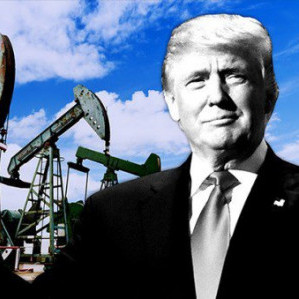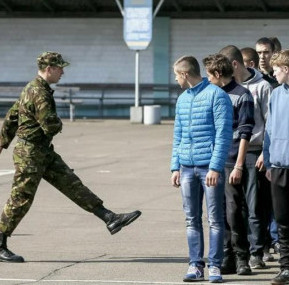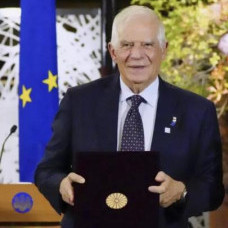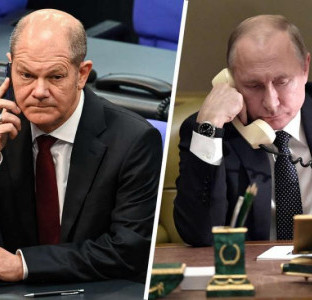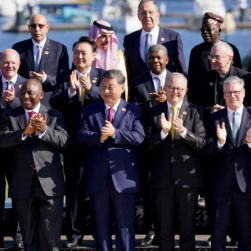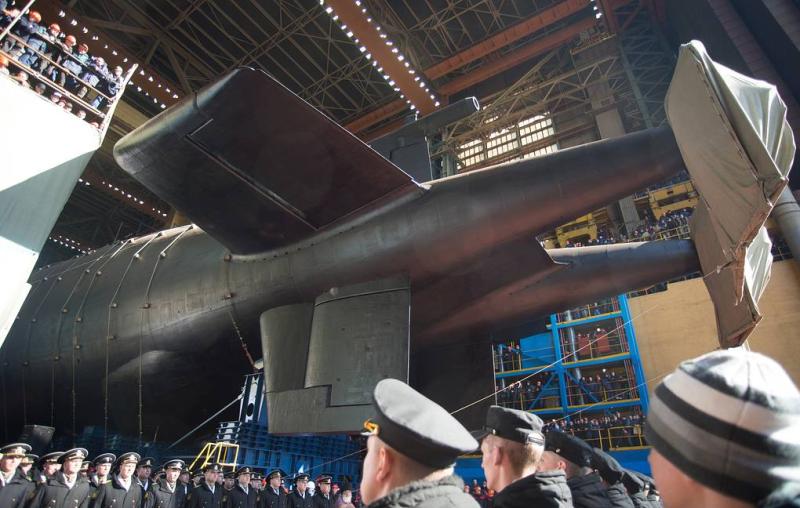
© Oleg Kuleshov/TASS
Top stories from the Russian press on Tuesday, October 4th, prepared by TASS
Kommersant: West alarmed by Russia’s new nuclear submarine
Against the backdrop of the conflict around Ukraine, there is growing concern in Europe over the potential use of nuclear weapons by Russia. A report published by Italy’s La Repubblica suggested that NATO is worried about the movement of the special-purpose nuclear submarine Belgorod that can carry Poseidon unmanned underwater vehicles. The article unleashed a wave of alarmist headlines in the European media.
The northern machine-building enterprise Sevmash delivered the Belgorod nuclear submarine, which is capable of carrying such torpedoes, to the Russian Navy in July. In the future, Khabarovsk submarines are to become the main carriers of Poseidons. However, there is very little information about tests involving the torpedo, while details on its characteristics vary, which paves the way for conspiracy theories and alarmism.
According to La Repubblica, the 24-meter-long torpedo can travel distances of up to 10,000 kilometers and cause a radioactive tsunami off the coast of an American metropolis. Other media outlets pointed out that the Belgorod nuclear submarine is capable of carrying six such doomsday weapons. Some newspapers did not rule out that, in a move to intimidate the West, Russia might break its commitment not to conduct nuclear tests and test this nuclear-warhead torpedo for the first time.
Neither NATO officials, nor Russian ones commented on the movement of the Belgorod nuclear submarine on Monday.
"No doubt, every time this vessel goes to sea, NATO shows keen interest, and their concerns are not ungrounded," Dmitry Stefanovich, a research fellow at the International Security Center with the Russian Academy of Sciences’ Institute of World Economy and International Relations, told Kommersant. He said that the Belgorod nuclear submarine could not only carry Poseidon torpedoes, but also other underwater vehicles, including autonomous, remote-controlled as well as manned ones. This makes one think about the direct objectives involving the sub, which may include reconnaissance, the testing of new unmanned underwater drones and other systems, as well as sabotage, the expert warned. However, he believes that it is the testing of the ship itself, its systems and subsystems that is going on now. "This in itself cannot but arouse NATO’s interest. Therefore, we can expect the alliance to increase activity of its surface and submarine forces as well as anti-submarine aircraft," Stefanovich concluded.
Nezavisimaya Gazeta: Oil output cut by OPEC+ may benefit Russia
A new package of anti-Russian sanctions will certainly include a Russian oil price cap, diplomats warn. At the same time, OPEC+ oil producers are considering a record oil output cut of more than 1 million barrels per day, the largest one since the 2020 pandemic. These reports are preliminary, and there could be a lesser cut.
OPEC+ may be responding to several trends at once. These include the tightening of monetary policy by the world’s leading central banks and the slowdown of the global economy, Sergey Pigarev, an analyst at Freedom Finance Global, told Nezavisimaya Gazeta. Senior analyst at BCS World of Investments Ronald Smith pointed to the rapid decline of the Chinese economy, which is still running its Zero-COVID policy, the United States, where inflation has hit a 40-year high, and Europe, which is facing the worst energy crisis in its history.
"As part of its proposed production cuts, OPEC+ will attempt to stabilize oil prices at above $80 per barrel," a source in the Energy Development Center told the newspaper. "If it is indeed announced that production will be reduced by 1 million barrels per day all at once, oil could easily revisit the levels of $100 per barrel and higher, trading at $97-110 per barrel," Finam analyst Andrey Maslov emphasized. This would push Russia’s Urals crude to about $80-100 per barrel, taking into account the current discount of some $22 per barrel, according to the Finance Ministry and exchange trading data.
However, Pigarev warned, OPEC+ oil producing countries are likely to reduce their quotas proportionally and gradually. "That’s why the actual cut in production volumes may be much lower than the nominal one - some 300,000-400,000 barrels per day against a nominal reduction of 1 million barrels," he said.
And yet experts agree that any decision by OPEC+ to reduce oil production would be good news for Russia. "This country is currently producing about 1 million barrels per day less than its quota in OPEC+, which means that a potential cut would not affect Russia’s actual oil output at all," the source in the Energy Development Center said. According to the think tank, Russia would benefit from any output reduction by OPEC+, as that would send oil prices soaring, while the country will not have to lower its production.
Vedomosti: India set to compete with China for investments
India will spend 100 trillion rupees ($1.2 trillion) to create infrastructure, both in logistics and information technology, which should boost the country’s investment appeal, the Economic Times reported on Monday. According to the Indian newspaper, as part of the project, the government of Prime Minister Narendra Modi will combine 16 ministries into a single digital portal that would provide businesses and investors a "one-stop shop" for project development, smooth approval and project costing. So far, information about the project is known in only the broadest terms, and no timeframes have been given. Indian officials say the goal of the Gati Shakti national master plan is to persuade foreign companies to open production facilities in the country.
And the program would give New Delhi an advantage over China. The timing is perfect, as, the Economic Times writes, China remains relatively closed to the rest of the world, while India looks lucrative for foreign businesses: it has a cheap labor force and a pool of English-speaking employees. However, the unreliable infrastructure in Asia’s third-largest economy has so far discouraged investors.
The Indian authorities are not seeking any economic competition with China, their goal is to get Beijing to recognize the country as an equal partner, Alexey Kupriyanov, an expert at the Russian International Affairs Council, believes. Nor is India seeking supremacy in the region, he said. New Delhi views the developments taking place in the region as a potential opportunity, if not to overtake China, then to catch up with them economically. While Western companies have been exiting China, India is striving to attract foreign companies by simplifying business as much as possible, the expert concluded.
The economic rivalry between China and India may not be tense, since the countries have been attracting different kinds of investments, Alexander Lomanov, who heads the Center for Asia-Pacific Studies, told Vedomosti. With China having powerful industries and a research base, high-tech companies are highly likely to invest there, as the country would provide businesses with highly qualified experts and engineers. In its turn, India can afford to attract lower-tech investments, while both are approximately at the same level in a number of spheres, including the production of smartphones, Lomanov explained.
Kommersant: Russian producers eye to revive oil transportation by rail
EU sanctions are imminent, and Russian oil companies are preparing to return to transporting oil eastward by rail for the first time since 2016. According to Argus, on September 25, Transneft shipped 4,400 tons of Gazprom Neft oil towards the port of Kozmino by a rail route it has not used since the launch of the ESPO-2, but the oil pipeline is now fully loaded. The oil cargo reached the sea terminal on Monday. Neither Transneft nor Gazprom Neft commented on the situation.
Oil producers actively used railway routes before 2015, when the Eastern Siberia-Pacific Ocean (ESPO-2) oil pipeline was launched to connect oil deposits in Eastern Siberia to Asia-Pacific markets. Transporting oil through a pipeline is much cheaper than by rail, therefore there has been decreased interest in oil transportation in tank cars to the east since 2016.
Argus experts estimate the potential volume of oil supplies to Kozmino by rail at 7 million tons per year. However, this could be hindered by a lack of discounts from Russian Railways and intense traffic along Eastern routes. People interviewed by Kommersant also pointed to a shortage of tank cars for oil transportation, since this segment of the market has been shrinking in recent years. Russian Railways declined to comment.
Also, the arrival of oil cargoes eastward could complicate things for Russian coal companies who have been extensively using this route for exports.
Vedomosti: Could Credit Suisse be another Lehman?
The banking sector in the euro area is facing a threat whose consequences could rival the September 2008 collapse of the US bank, Lehman Brothers: Credit Suisse, a systemically important bank globally and Switzerland’s second-largest lender, appears if not on the verge of bankruptcy, then at least hostage to speculations on this subject.
Last weekend, Credit Suisse top managers contacted their largest clients and partners to assure them that the bank is financially stable, the Financial Times reported. Reuters said the bank had sent its investors an official capital increase request, information that was denied by Credit Suisse in an interview with the FT. However, the news unnerved investors, and Credit Suisse shares, which have already lost more than half of their value since the start of the year, sank by 11% to an all-time low on Monday.
According to TheStreet, the Swiss bank is facing specific problems, while other banks, too, have encountered problems similar to those once confronted by Lehman Brothers. However, the banking crisis would hardly trigger a recession this time, Kirill Komarov, chief investment analyst at Tinkoff Investments, told Vedomosti. The recent developments in financial markets clearly took Credit Suisse, which was in dire straits already, by surprise, he said: rising interest rates, falling equity and bond markets, a looming recession in the euro area and a net income loss for a third straight quarter. European lenders, as recession bellwethers, will need substantial reserves to survive the looming crisis, he warned.
